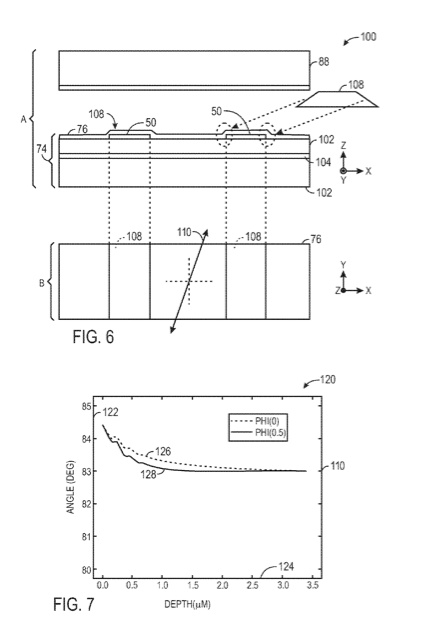Apple eyeing high contrast liquid crystal display
A new Apple patent (number 20110298833) at the US Patent & Trademark Office shows that Apple is investigating a high contrast liquid crystal display.
According to Apple devices and methods related to high-contrast liquid crystal displays (LCDs) are provided. For example, such an electronic device may include an LCD with two liquid crystal alignment layers not symmetric to one another and upper and lower polarizing layers respectively above and below the alignment layers. The inventors are Enkh Amgalan Dorjotov, Zhibing Ge, Ming Xu, Cheng Chen, Bai Young Park, John Z. Zhong, Wei Chen and Shawn Robert Gettemy.
Here's Apple's background on the invention: "Liquid crystal displays (LCDs) are commonly used as screens or displays for a wide variety of electronic devices, including such consumer electronics as televisions, computers, and handheld devices (e.g., cellular telephones, audio and video players, gaming systems, and so forth).
"Such LCD devices typically provide a flat display in a relatively thin package that is suitable for use in a variety of electronic goods. In addition, such LCD devices typically use less power than comparable display technologies, making them suitable for use in battery-powered devices or in other contexts were it is desirable to minimize power usage.
"LCD devices typically include a plurality of picture elements (pixels) arranged in a matrix to display an image. Individual pixels of an LCD device may variably permit light to pass when an electric field is applied to a liquid crystal material in each pixel. This electric field may be generated by a voltage difference between a pixel electrode and a common electrode. The voltage that is applied to the pixel electrode that causes the pixel to transmit the least amount of light may be referred to as a gray scale level 0 voltage (G0).
"As gray scale level voltages increase beyond G0, the liquid crystal material should gradually allow more light to pass through the pixel. In some cases, however, as the gray scale level voltages increase beyond G0, the amount of light passing through the pixel may at first decrease, in a condition known as gray scale inversion or gray inversion. The condition of gray inversion in LCD panels may reduce contrast and produce image artifacts at low gray scale voltage levels."
-- Dennis Sellers













